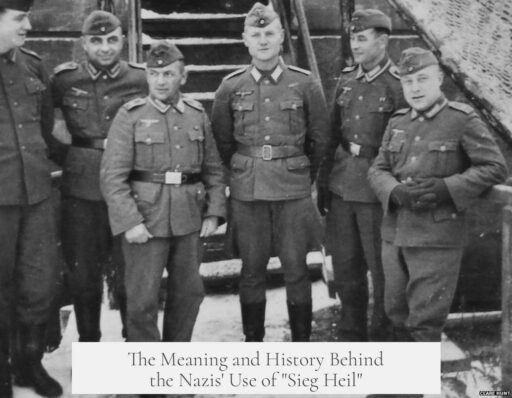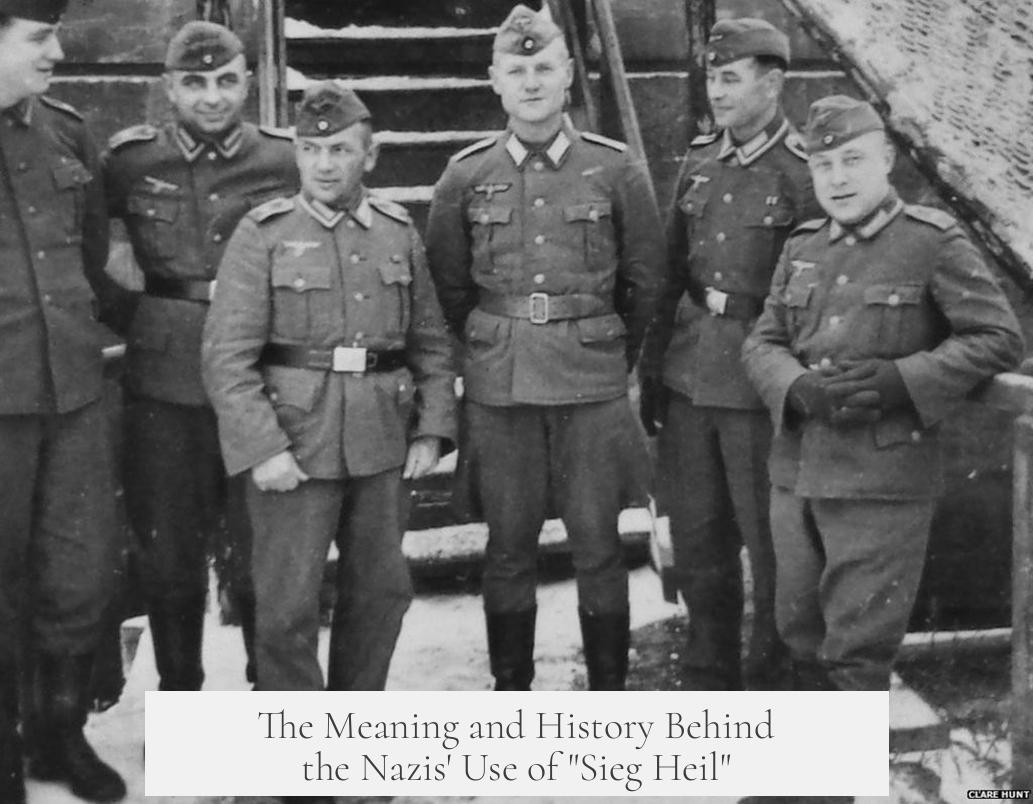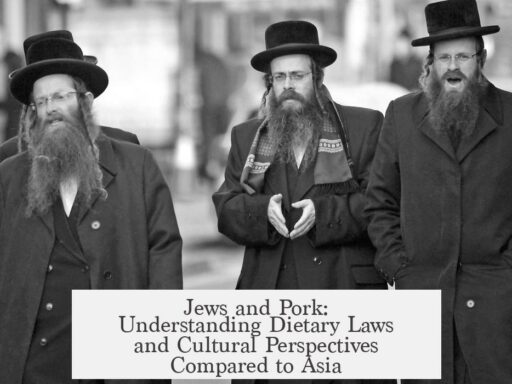The Nazis used the “Sieg Heil” salute as a political and ideological symbol to evoke strength, unity, and victory, drawing on a gesture interpreted as rooted in ancient traditions. Its use was institutionalized to reinforce loyalty and nationalism.
The gesture Nazi members gave as “Sieg Heil” originates primarily from a stylized version of what was believed to be an Ancient Roman salute. This Roman salute involved extending the arm outward, though historical evidence for this specific form is limited. Early-20th-century films shaped public perception by depicting this gesture as Roman, linking it to power and empire.
The Italian Fascist Party first adopted this salute as a neo-Imperialist symbol to connect their movement with the glory of Ancient Rome. The Nazis, observing this, began to use the salute in the early 1920s within their party. Adolf Hitler favored the gesture as a sign of allegiance and encouraged its use during meetings and rallies.
Within the Nazi Party, some members resisted the salute, viewing it as Italian rather than authentically Germanic. This led to attempts to forge Germanic traditions around the gesture. Hitler contributed to this by claiming it had roots in the Holy Roman Empire, seeking to legitimize its use culturally and historically.
After the Nazis seized power in 1933, the salute became mandatory for all government officials to express loyalty. The German military initially had restrictions on using the salute with head coverings, but after an assassination attempt on Hitler in 1944, he forced the salute to become the formal military greeting, reinforcing obedience.
The verbal part, “heil,” came from nationalist Germanic movements in the late 19th and early 20th centuries, used as a greeting meaning “hail.” “Sieg Heil” translates directly to “Hail Victory,” expressing triumph and unity in Nazi rhetoric. Civilians began using the salute to avoid suspicion or penalties, integrating it deeply into daily life.
| Aspect | Details |
|---|---|
| Origin | Derived from an interpreted Ancient Roman salute popularized by early films. |
| Italian Fascists | Adopted it to link their regime to Ancient Rome’s legacy. |
| Nazi Adoption | Used from the 1920s, encouraged by Hitler as a loyalty symbol. |
| Institutionalization | Mandatory for government officials, then military, expanding into civilian use. |
| “Heil” Meaning | Means “hail,” combined with “Sieg” means “Hail Victory.” |
- The Nazi “Sieg Heil” salute traces back to a stylized Roman salute first adopted by Italian Fascists.
- Hitler promoted the salute to symbolize loyalty and strength of the Nazi Party.
- The salute became compulsory in government and later military settings.
- “Sieg Heil” verbally means “Hail Victory,” reflecting nationalistic triumph.
- It spread into civilian life as a sign of political conformity.
Why Did the Nazis Say “Sieg Heil”?
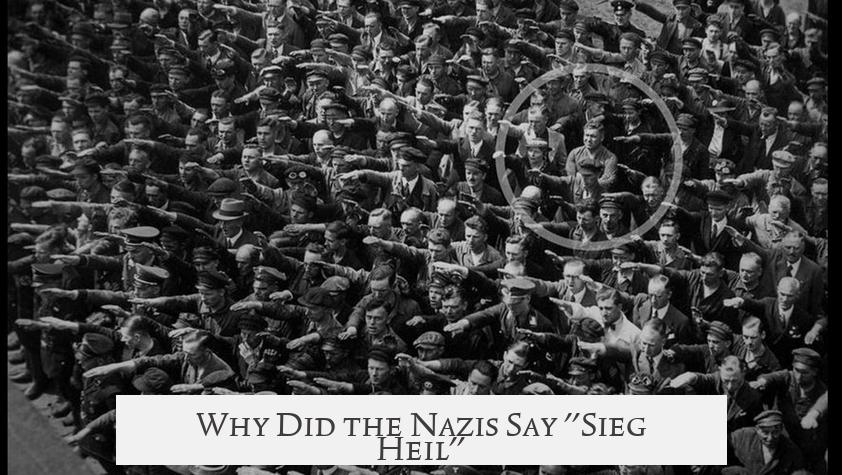
The Nazis didn’t invent the “Sieg Heil” salute out of thin air—it was a borrowed and twisted symbol designed to inspire power, loyalty, and control. Understanding why they used it means looking into the layers of history, propaganda, and political tactics behind that infamous gesture and phrase. Let’s unravel this story.
So, why did the Nazis “Sieg Heil”? The answer lies in a mix of historical myth-making, political theater, and brutal enforcement of conformity.
Tracing the Origins: Ancient Rome or Hollywood?
If you ever thought the Nazi salute was a direct throwback to Ancient Rome, you’re partly right—but the truth is more complicated. The gesture the Nazis used is an interpretation of an interpretation of an interpretation of the so-called “Ancient Roman salute.”
The ancient Romans might have thumped their chests and extended their hands in some kind of greeting, but there’s little solid proof they used the high, straight-arm salute we associate with Nazis. It’s mostly a Hollywood invention. Early 20th-century films, both Italian and American, depicted Roman soldiers saluting with outstretched arms, and this image stuck. The Nazis jumped on this pop-culture bandwagon, using it to legitimize their movement with a veneer of historical gravitas.
Italian Fascists Set the Stage
Before the Nazis got their hands on it, the Italian Fascist Party under Mussolini adopted this salute. They wanted to evoke the power and glory of the Roman Empire, suggesting a new imperial destiny for Italy. It was all about tapping into nationalist pride and imperial nostalgia. The gesture became a Neo-Imperialist symbol.
This borrowed salute eventually crossed the Alps into Germany, where the Nazis saw potential for their own narrative.
Hitler’s Swipe and the Nazi Adoption
In the 1920s, as Adolf Hitler was rising through the ranks, some Nazis started using the salute to greet him. He loved it and encouraged it enthusiastically. However, not everyone was on board. Some Nazis felt it was “un-Germanic” because it resembled an Italian gesture.
The solution? Invent a history that made it German. Hitler himself claimed the salute dated back to the Holy Roman Empire’s Germanic tribes, trying (rather clumsily) to graft a German tradition onto the gesture. This mix of half-hearted defending and creating tradition shows how the Nazis manipulated history for political ends.
From Gesture to Law: The Salute Becomes Mandatory
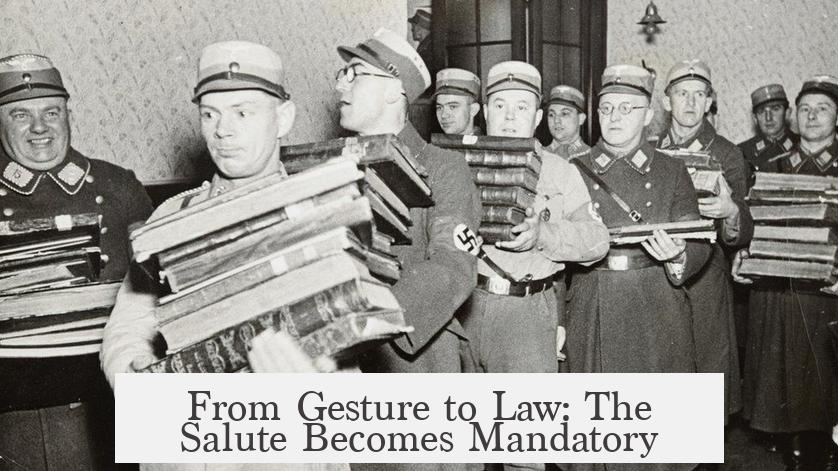
Once the Nazis seized power in 1933, the salute was no longer optional. Civil servants had to use it, or risk suspicion and punishment. It wasn’t just a greeting—it was a loyalty test, an outward sign saying, “I am with the regime.”
The salute extended into the military too, but with caveats. Soldiers only used it without headwear at first, until 1944. That year, after some army officers attempted to kill Hitler, he made the salute mandatory for all soldiers at all times, tightening his grip on their loyalty.
This enforcement showed how the salute morphed from a greeting into a symbol of absolute submission. Soon, civilians adopted it to avoid trouble, embedding it deeply into everyday life in Nazi Germany.
What Does “Heil” Mean Anyway?
The word “heil” is old. It comes from Germanic nationalist circles that used it as a greeting in the late 19th and early 20th centuries. It means “hail” or “salute.” “Sieg” means “victory.” Put together, “Sieg Heil” means “Hail Victory.” Simple, powerful, and designed to pump up enthusiasm.
Yet, this seemingly harmless phrase takes on a sinister edge when paired with the rigid salute. It’s not just a greeting; it’s a demand—to celebrate conquest, obedience, and the Nazi cause.
What Can We Learn From This History?
The Nazi “Sieg Heil” salute is a striking example of how symbols can be repurposed and weaponized. It teaches us about the power of gestures, slogans, and imagery in shaping ideology. Even a greeting can become a tool of control.
Why did the Nazis “Sieg Heil”? Because they needed a symbol that looked impressive, connected to a mythic past, and demanded loyalty. The salute served all these purposes, becoming a signature element of Nazi identity.
How should we remember this? Not as a relic or a joke, but as a grave reminder of how political movements co-opt culture to impose power—and why vigilance against such symbolic manipulation matters.
A Final Thought
In a world where gestures and slogans can go viral overnight, the story behind “Sieg Heil” urges us to ask: What do the symbols around us really mean, and who stands to gain from them? Every salute, every chant carries baggage. History encourages us to look beyond the surface.
And if you ever see someone awkwardly thrusting their arm in the air without context, now you know—the meaning is more than just an arm up. It’s decades of manipulation, myth, and menace rolled into one.
